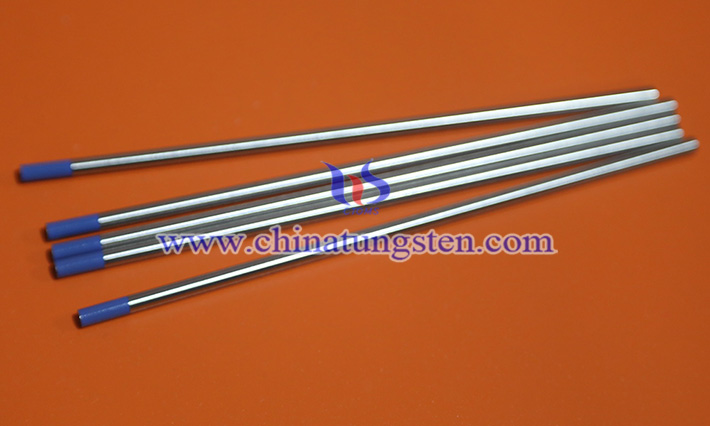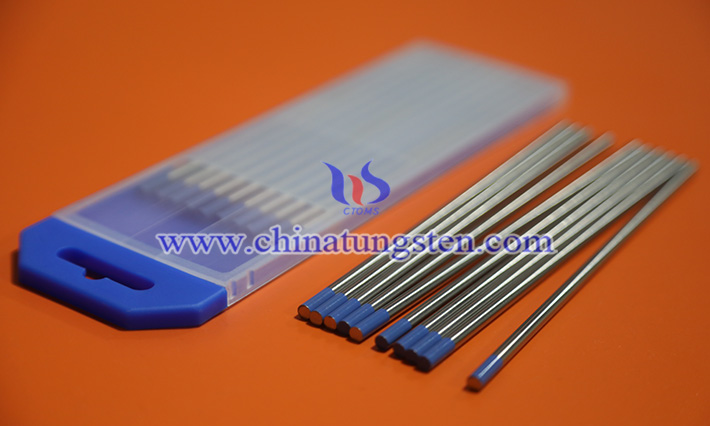Is the Lanthanum Tungsten Electrode Suitable for Direct Current or Alternating Current?
- Details
- Category: Tungsten Information
- Published on Wednesday, 30 July 2025 16:11
With the widespread use of argon arc welding (TIG) technology today, the type of welding power source—direct current (DC) or alternating current (AC) —has a direct impact on welding process stability, material compatibility, and welding efficiency. Electrode material, a key component of the welding process, and its compatibility with the power source are fundamental to weld quality.
Lanthanum tungsten electrodes, favored across multiple industries for their excellent arc starting capability and environmental friendliness, are these non-radioactive rare earth-doped welding materials more suitable for DC or AC power? The answer isn't a simple "yes" or "no"; it depends on the specific application scenario and process requirements.

In terms of material properties, this lanthanum tungsten electrode incorporates a small amount of lanthanum oxide (La₂O₃), effectively improving electron emission efficiency and enabling rapid and stable arc formation even under low current conditions. This property makes it ideal for DC positive connection (DCEN) welding, particularly when welding metals such as carbon steel, stainless steel, copper, and nickel alloys, achieving excellent weld formation and weld consistency. Compared to traditional thoriated tungsten materials, it not only offers a softer arc start and a more stable arc column under DC conditions, but also reduces electrode burnout and maintains excellent tip shape retention, significantly extending electrode life.
Lanthanide -doped products also demonstrate high adaptability in pulsed current, automated welding equipment, and robotic welding systems, contributing significantly to the predominance of DC welding applications. In precision welding applications requiring high arc focus and continuity, such as electronic component manufacturing and medical device welding, DC power supplies combined with these electrodes deliver higher welding quality and efficiency.
So, can this type of material be used under AC conditions? The answer is yes, but there are trade-offs. In AC welding, especially for aluminum and aluminum alloy welding, the electrode needs to maintain stability in the alternating positive and negative polarity conversion of the current cycle, while also withstanding strong thermal loads and anode cleaning effects. In this environment, traditional zirconium- tungsten materials are more recommended due to their strong resistance to thermal shock. However, experiments and practical applications have shown that high-end types of lanthanide electrodes (such as WL20) can also maintain good arc stability in AC welding, and even show good application performance in some automatic welding equipment.

However, it is important to note that when using such materials under AC conditions, proper end grinding is essential. A rounded or conical shape is generally recommended to improve the stability of the anode ball formation. Welding parameters (such as frequency and balance ratio) also need to be adjusted accordingly to the electrode's characteristics to maximize its performance.
Therefore, lanthanum tungsten electrode performs best in DC welding, especially suitable for DC negative electrode welding of steel materials. In the field of AC welding, although it is not as universal as zirconium materials, it can still be used in some aluminum welding processes under the condition of proper parameter adjustment.
- Chinatungsten Online: www.chinatungsten.com
- CTIA GROUP LTD: en.ctia.group
- Tungsten News & Price: www.ctia.com.cn
- Molybdenum News & Price: news.molybdenum.com.cn
- Tel.: 86 592 5129696; Email: sales@chinatungsten.com



 sales@chinatungsten.com
sales@chinatungsten.com